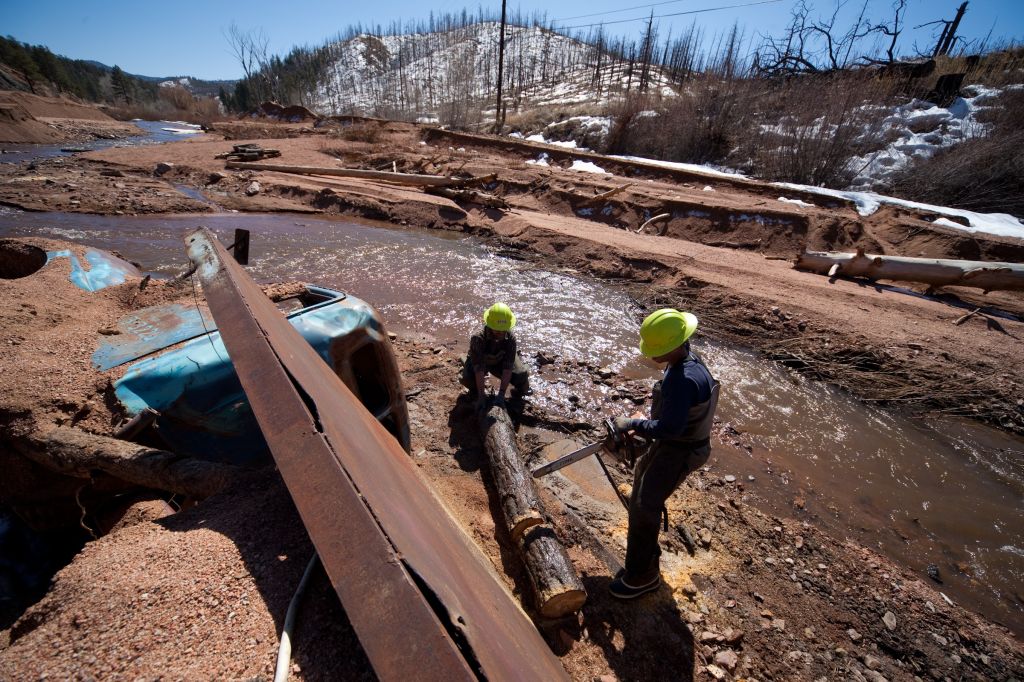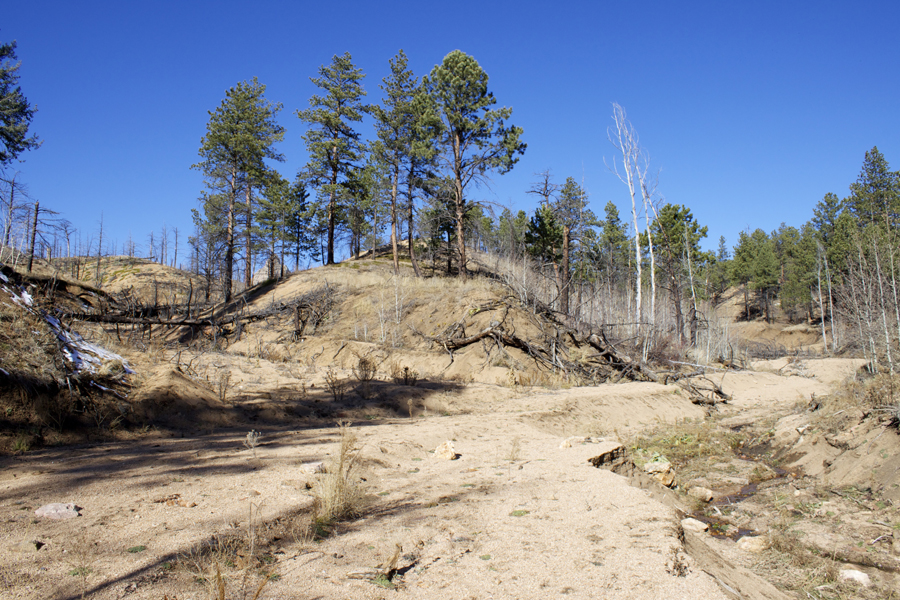Following the devastating Hayman Fire of 2002, the NFF worked with corporations, organizations and the Forest Service to repair the watershed of Trail Creek, a tributary to the Upper South Platte River, and an important source of water for Denver and other Front Range communities.
In June of 2002, the perfect conditions for a devastating fire converged in the forests near Denver, Colorado. A five-year period of below-normal precipitation and unseasonably dry air; absence of fire in the area during the previous 100 years; high, gusty winds; low precipitation; and human carelessness collided to create one of the state’s largest fires.



